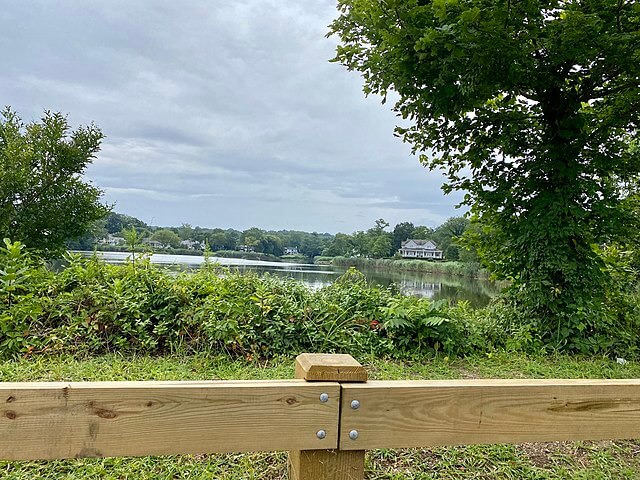Plandome Manor Proposal Raises Leeds Pond Concerns
Plandome Manor village officials rejected a homeowner’s request to fill in part of his nearly $2 million waterfront property after neighbors packed village hall to voice concerns that the work may undo efforts to rehabilitate Leeds Pond.
The proposal before the Village of Plandome Manor Board of Zoning Appeals sparked a nearly three-hour debate at the fully-packed June 15 meeting, where members of the community often interrupted speakers as Chairman Mario Harris pleaded with the audience. The board later denied the request to add a 500-cubic-yard fill in the rear of the home bordering Leeds Pond — but an alternate proposal for a 300-cubic-yard fill was subsequently filed by the applicant and will be taken up at a later date.
“While the reduction to 300 cubic yards is encouraging, it will still adversely impact Leeds Pond as the experts explained at [Thursday’s] BZA meeting,” Save Leeds Pond, an environmental group of Plandome Manor residents, said in a statement. “There is no legitimate reason for landfill.”
The decision came in wake of recent efforts by the neighboring Science Museum of Long Island to remove invasive species from the pond and ongoing plans to restore the forest area surrounding the pond, which community members believe would be disrupted by the fill.
The New York State Department of Environmental Conservation previously approved the 500-cubic-yard fill. Plandome Manor’s village codes state that the maximum fill is 50 cubic yards, but the village board has also approved large fills in the past, including a 752-yard site in March.
In the days prior to the meeting, a flyer spread throughout Plandome Manor warning of damage to the pond that would occur if the plan was approved.
“I want to assure you that the information presented in the flyer is entirely incorrect,” Plandome Manor Mayor Barbara C. Donno said. “The BZA application pertains solely to the amount of fill placed on a piece of property. There is no work being proposed that affects Leeds Pond whatsoever.”
The property is owned by a limited liability corporation shielding the name of the homeowner, whose attorney represented them at the meeting.
“We’re not here tonight to talk about the pond. We’re not talking about wetlands. We’re not talking about wildlife,” said John Wagner, one of three attorneys representing the unnamed resident.
But critics maintained that the proposed restoration at the waterfront home at 1362 Plandome Dr. was cause for concern.
The application stated that the restoration was for a “play area for the resident’s two children.” But Harris was concerned about the site’s topography. Because of the shape of the land, there is a large drop near the lowered fence.
“We all visited the site. We all notice the large drop at the end,” he said. “If a kid went too far, they could actually fall and get hurt.”
Neighbors were also concerned of the possibility of spillage run-off into neighbor’s homes, which the resident’s team offered a proposal to.
“We will add drainage swells along the side property line that will help mitigate any potential runoff going to the neighbors,” said Michael Rant, part of the engineering team behind the project. “We want to contain it 100% on site.”
Wagner, the attorney, argued that there is no correlation between the restoration and the effort to preserve the pond. But Christopher Gobler, a professor at the School of Marine and Atmospheric Sciences at Stony Brook University, was one of six experts who spoke on the potential environmental problems of Leeds Pond. Gobler believes that the pond would be significantly worsened by the usage of nearly one million pounds of soil that would be needed for the fill. An ecological survey of the pond in May found that it is polluted by toxins.
“Once [the soil] gets in the pond, nitrogen phosphorus will ultimately leach out and leach into the pond making the conditions worse,” Gobler said.
Throughout the meeting, members of the community pleaded with the board.
“The pond is the largest and most ecologically important freshwater body located on the Port Washington peninsula,” said Plandome Manor resident Amelia Amn, who was one of more than a dozen residents who spoke at the meeting. “This valuable ecological source is being put at risk due to proposed actions.”
She added, “We are looking for compromise between the applicant enjoying newly constructed property and eliminating adverse effects to the community.”





























